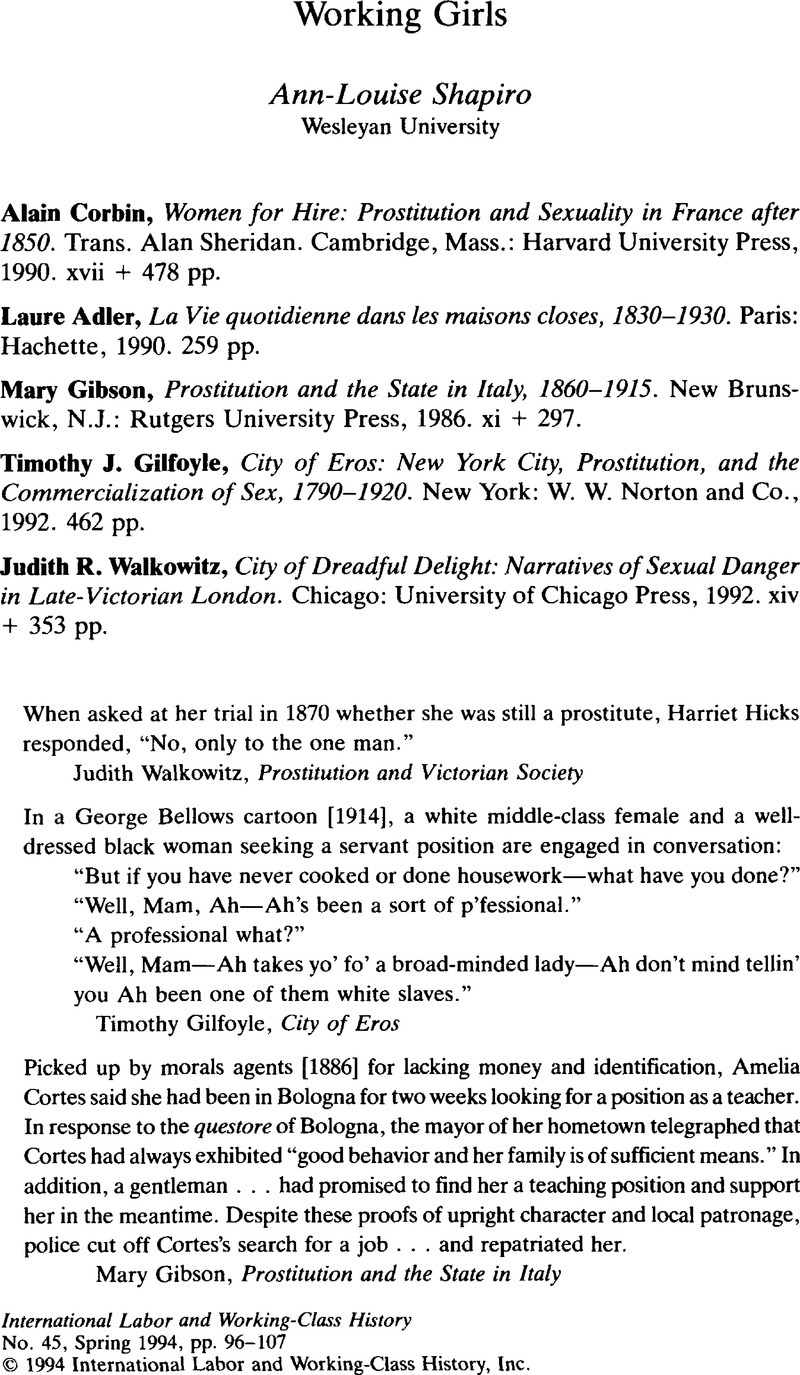No CrossRef data available.
Article contents
Working Girls
Published online by Cambridge University Press: 16 December 2008
Abstract

- Type
- Review Essays
- Information
- Copyright
- Copyright © International Labor and Working-Class History, Inc. 1994
References
NOTES
1. Corbin shows that prostitutes were not necessarily women seduced by their employers, nor were they typically factory girls or virgins, or illegitimate children whose prostitution reproduced the sexual disorder of their origins. In the more usual pattern, they were women who had their first sexual encounters with men of their own class.
2. “Le ‘Sexe en Deuil’ et l'histoire des femmes au XIXe siècle,” in Une Histoire des Femmes est-elle possible?, ed. Perrot, Michelle (Paris, 1984).Google Scholar
3. “Commercial Sexuality in Nineteenth-Century France: A System of Images and Regulations,” in The Making of the Modern Body, ed. Gallagher, Catherine and Laqueur, Thomas (Berkeley, 1987), 212–23.Google Scholar
4. For a quite different argument, see Harsin, Jill, Policing Prostitution in Nineteenth- Century Paris (Princeton, 1985).Google Scholar Harsin argues that the decline of the official bordello and the rise of the maison de rendez-vous was less the product of changing tastes than the canny calculation of police and others whose primary goal was to control clandestineness—not to supervise the small number of women enclosed in the maison de tolérance.
5. Gibson notes that police “specifically targeted lower-class women for arrest on charges of prostitution and ignored the licensing of brothels catering to the wealthy,” a practice which kept from the list of inscribed women the better-off groups of prostitutes.
6. Walkowitz, Judith, Prostitution and Victorian Society: Women, Class and the State (Cambridge, 1980).CrossRefGoogle Scholar


